The Hunza Valley is a captivating mountainous region in the northern part of Pakistan’s Gilgit-Baltistan region. Nestled along the Hunza River, it borders Ishkoman to the northwest, Shigar to the southeast, Afghanistan’s Wakhan Corridor to the north, and China’s Xinjiang region to the northeast. The valley comprises three distinct regions: Upper Hunza (Gojal), Central Hunza, and Lower Hunza (Shinaki). Historically, Hunza played a crucial role in trade routes connecting Central Asia to the subcontinent, and it was a hub for Buddhist missionaries. Today, it’s renowned for its stunning landscapes, ancient forts like Baltit Fort, and the longevity of its people, who live in harmony with nature .
Places of Attractions
Baltit Fort
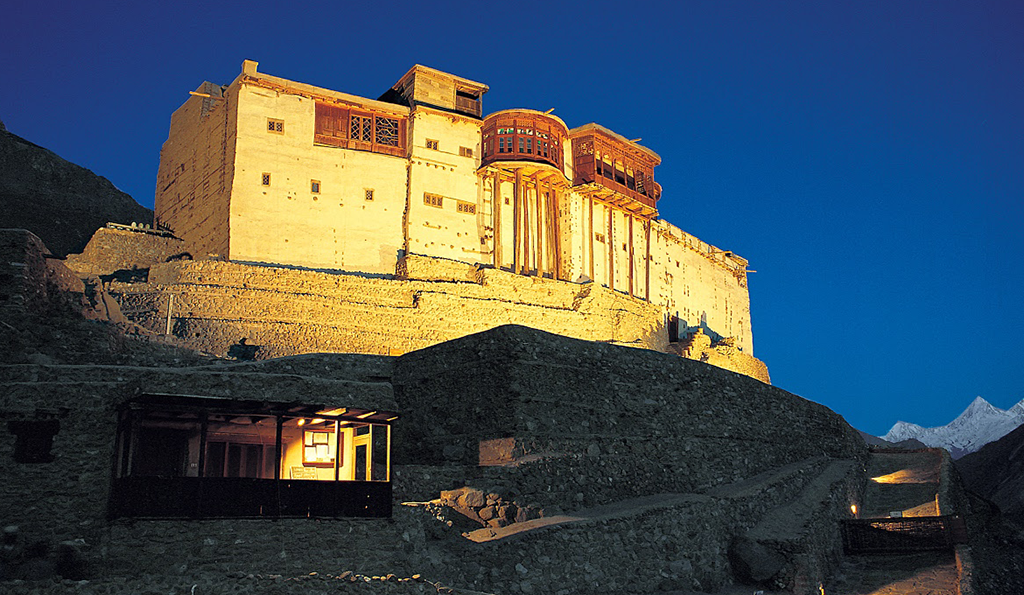
Baltit Fort is a historic fort nestled in the Hunza Valley of northern Pakistan. Founded in the 8th century CE, this impressive structure stands near the town of Karimabad. Once the residence of the Mirs of Hunza, it now serves as a cultural center and museum. The fort’s strategic location at the foot of the Ulter Glacier offers breathtaking views of the surrounding mountains. Thanks to a restoration program initiated by the Royal Geographical Society of London and supported by the Aga Khan Trust for Culture Historic Cities Support Programme, Baltit Fort was saved from decay and transformed into a captivating museum. It has been on the UNESCO World Heritage Tentative list since 2004.
Attabad Lake

Attabad Lake, also known as Gojal Lake, is a stunning water body located in the Gojal region of Gilgit-Baltistan, Pakistan. Its formation in January 2010 was a result of a massive landslide in the Attabad village within the Hunza Valley. The landslide tragically claimed lives and disrupted the flow of the Hunza River for five months. The lake stretches approximately 21 kilometers in length and reaches depths of over 100 meters. Visitors can enjoy activities such as boating, jet-skiing, fishing, and even winter sports. The lake’s creation submerged the local highway, necessitating transportation via barges until a new road tunnel was opened in September 2015. Despite its dramatic origin, Attabad Lake now attracts attention year-round for its natural beauty and recreational opportunities.
Altit Fort

Altit Fort stands as an architectural marvel in the Hunza Valley, Gilgit-Baltistan, Pakistan. With a history spanning over 1,100 years, it is the oldest monument in the region. Originally home to the hereditary rulers of Hunza, known as Mir, the fort eventually gave way to the nearby Baltit Fort. The word “Altit” translates to “this side down,” and the fort’s area is inhabited by the Burusho people. Restored by the Aga Khan Trust for Culture and the Government of Norway, Altit Fort now welcomes tourists since its reopening in 2007. Its small rooms, low portals, and exquisite wood carvings make it a captivating site for visitors.
Eagle’s Nest (Duikar)

Eagle’s Nest, perched atop the Duikar Village in the Hunza Valley, offers unparalleled panoramic views of the surrounding mountains and valleys. At an altitude of 9,043.3 feet (2,850 meters), it’s the highest village in Hunza. Accessible via a 25-minute jeep ride from Karimabad or a scenic two-and-a-half-hour walk, this family-run hotel boasts 30 fully furnished rooms, two restaurants, and an open terrace built into the rock. From any room or restaurant, guests can marvel at the spectacular vistas of 11 peaks, including Rakaposhi, Ultar Peak, Golden Peak, Diran Peak, and Lady Finger. Eagle’s Nest began as a small camping site in 1994 and has since become a beloved retreat for travelers seeking both comfort and natural beauty.
Gulmit
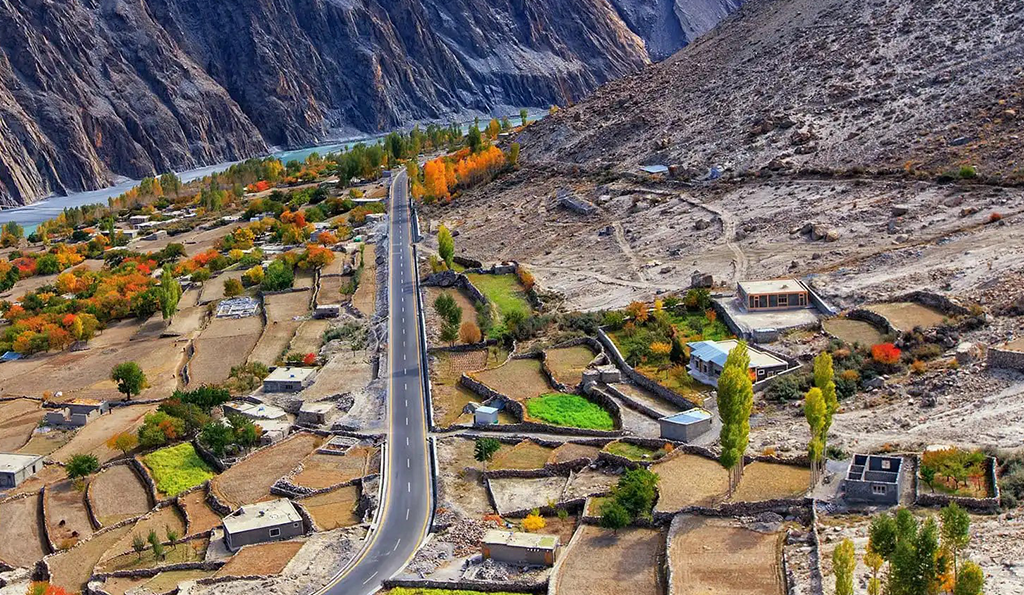
Gulmit, also known as Gul-e-Gulmit, is a centuries-old historic town located in the upper Hunza Valley of Gilgit-Baltistan, Pakistan. Nestled amidst mountains, peaks, and glaciers, Gulmit serves as a tourist spot with numerous historic places, hotels, shops, and even a museum. Before 1974, when Hunza was a princely state, Gulmit held the honor of being the summer capital. Today, it stands as the administrative capital of Upper Hunza (Gojal). The town’s oldest intact house dates back more than six centuries. The local population speaks the Wakhi language and follows the Shia Imami Ismaili sect of Islam. Notably, the Ondra Fort, built in the 16th century, overlooks Gulmit and Ghulkin villages, adding to the area’s rich historical heritage.
Rakaposhi Viewpoint
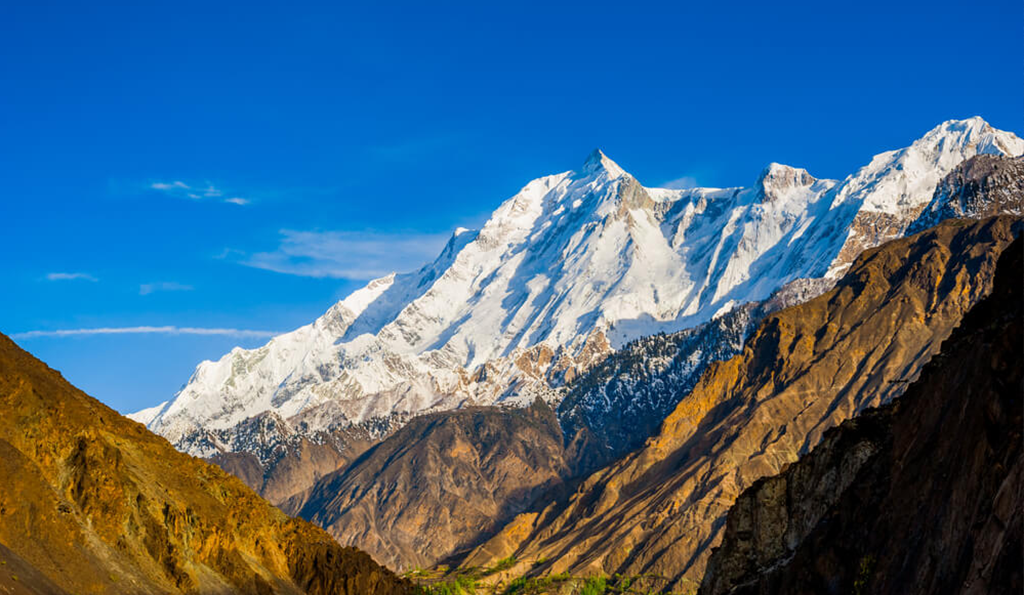
Rakaposhi Viewpoint, also known as the “Zero Point of Rakaposhi,” offers an awe-inspiring close-up encounter with the majestic Rakaposhi mountain. Situated in Ghulmet village within the enchanting Nagar Valley, this remarkable viewpoint lies right on the Karakoram Highway (KKH). From here, visitors can marvel at the complete aspect of Rakaposhi, including its towering peak. The spot features a restaurant, a tuck shop, and a gems and handicraft shop. Additionally, a clear ice-cold water stream flows from the glacier, providing a serene backdrop for tea or contemplation. It’s a must-visit for nature enthusiasts and those seeking breathtaking vistas.
Passu Cones
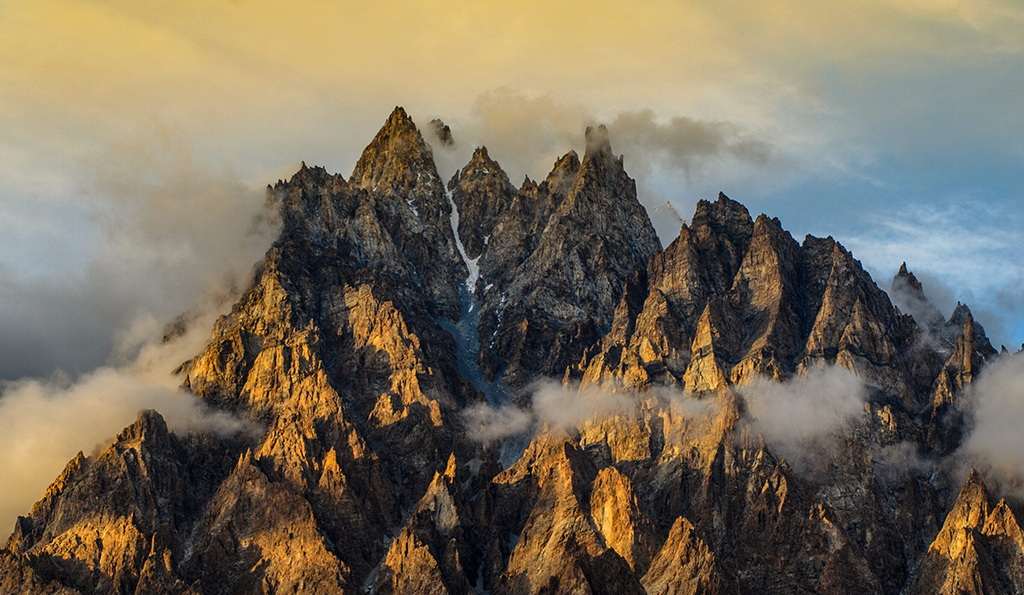
Passu Cones, also known as Passu Cathedral, are a cluster of jagged peaks located in the Hunza Valley of Pakistan’s Gilgit-Baltistan region. Rising abruptly from the ground, these cone-shaped peaks resemble giant ice cream cones, which is how they acquired their name. Made of limestone, the Passu Cones reach an impressive height of 6,106 meters. They are part of the Batura Muztagh Mountain range and are situated in the village of Passu. These striking mountains are not only visually captivating but also hold the distinction of being one of the most photographed peaks globally, attracting tourists from around the world.
Sost
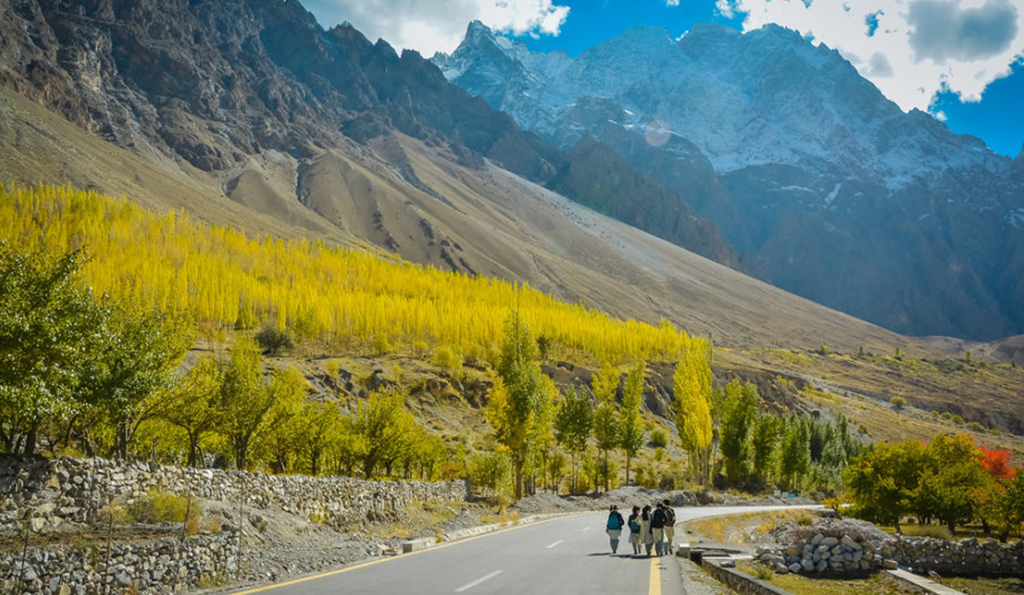
Sost is a beautiful village and an attractive tourist destination in Gojal (Upper Hunza), within the Hunza District of Gilgit-Baltistan, Pakistan. It lies approximately 184 kilometers from the main city of Gilgit, along the Karakoram Highway before reaching the China Border at Khunjerab Pass—the highest border crossing in the world. Sost’s scenic location, surrounded by mountains and valleys, makes it a captivating place for travelers exploring the region.
Borith Lake
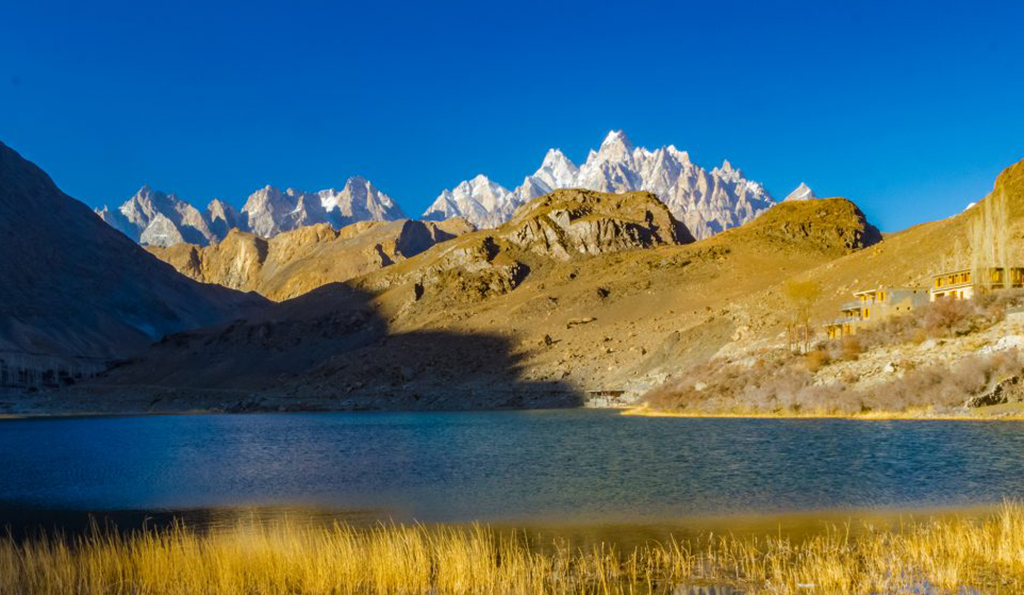
Borith Lake is a captivating saltwater lake situated in the Hunza Valley, within the Gilgit–Baltistan region of northern Pakistan. At an elevation of approximately 2,600 meters (8,500 feet) above sea level, Borith Lake offers breathtaking views of snow-capped mountains and lush green forests. The lake is fed by the Ghulkin Glacier, and its crystal-clear waters beautifully reflect the surrounding landscape. Visitors can reach Borith Lake via a 2 km unpaved jeep route from Husseini village, adjacent to Gulmit village. It’s a sanctuary for migrating wildfowl, making it a favorite spot for bird-watchers and nature enthusiasts. To witness the large number of ducks arriving from southern Pakistan, visit between March and June. Similarly, from September to November, the migration occurs in reverse as winter approaches in the north. A trek to the Hussaini Glacier or the longer walk to Passu Gar Glacier adds to the adventure in this picturesque region.
Hussaini Bridge
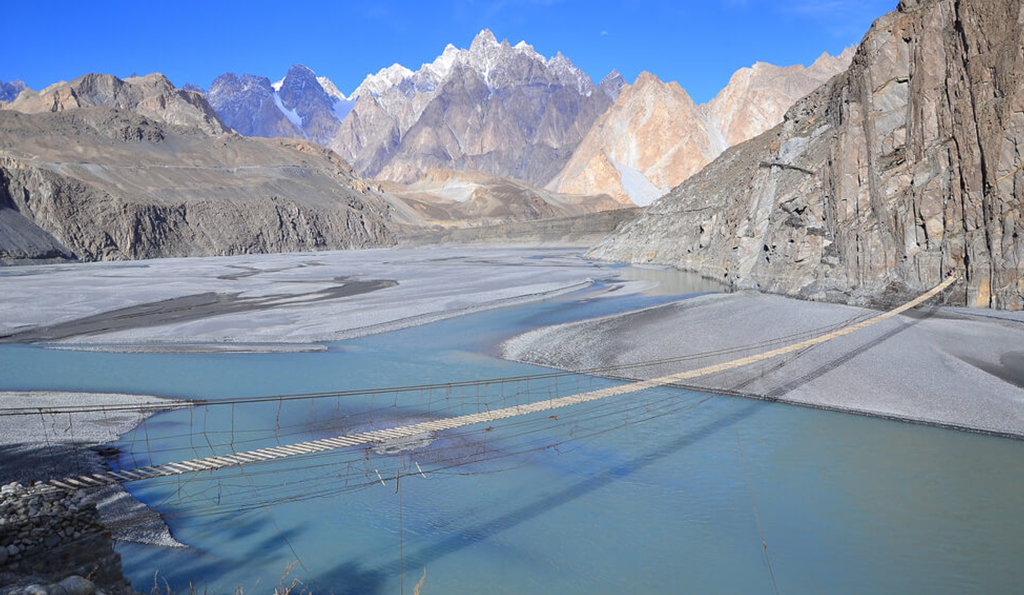
The Hussaini Hanging Bridge, located in the Upper Hunza Valley of Gilgit-Baltistan, Pakistan, is known as one of the most dangerous bridges in the world. This precarious rope bridge spans Borit Lake and is approximately 635 feet (194 meters) long. Constructed entirely of wood and rope, it features 472 wooden planks, each measuring 6 feet in length with a gap of about 4 inches between them. Despite its appearance, the Hussaini Bridge remains relatively safe and has become a sought-after tourist attraction. Visitors test their nerves as they carefully traverse this thrilling yet breathtaking bridge, which offers stunning views of the surrounding mountains and lake. While crossing, strong winds add to the challenge, making it an unforgettable experience for hikers and adventurers.
Karimabad
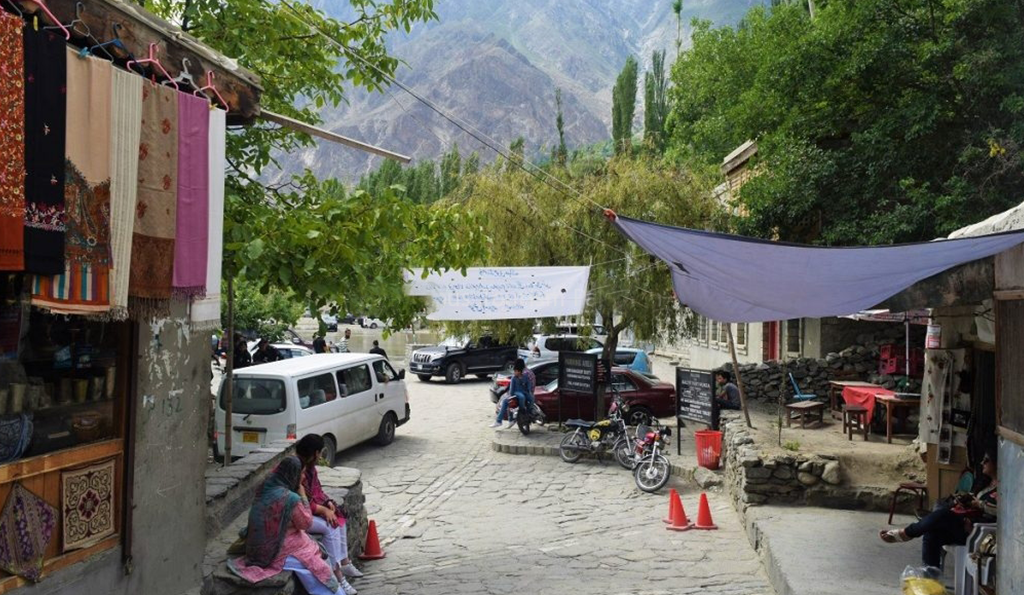
Karimabad is a picturesque village located in the Hunza Valley, renowned for its stunning natural beauty and rich cultural heritage. Perched on a terrace above the Hunza River, the village offers breathtaking views of the surrounding mountains, including the iconic Rakaposhi and Ultar Sar peaks. Karimabad is home to historical sites such as Baltit Fort and Altit Fort, which provide fascinating insights into the region’s history and architecture. The village’s charming streets, lush terraced fields, and vibrant local culture make it a delightful destination for exploring traditional Hunza life and enjoying the spectacular landscapes.
Khunjerab Pass

Khunjerab Pass is a high mountain pass situated at an altitude of 4,714 meters (15,466 feet) on the border between Pakistan and China, making it one of the highest paved international border crossings in the world. The pass offers awe-inspiring views of the surrounding snow-capped peaks and rugged terrain, creating a dramatic and memorable landscape. The journey to Khunjerab Pass includes traversing the scenic Karakoram Highway, with its breathtaking vistas and challenging conditions. The pass serves as a gateway to the Karakoram region and provides a unique opportunity to experience the high-altitude beauty and geopolitical significance of this remote area.
Naltar Valley
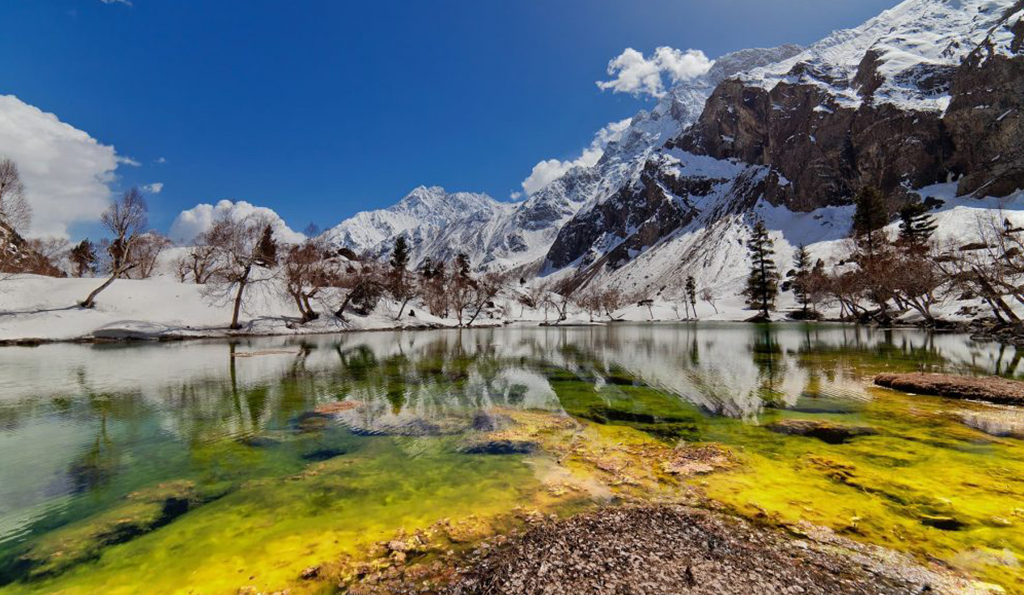
Naltar Valley is a serene and scenic destination located near Gilgit, known for its lush green meadows, pristine lakes, and vibrant wildflowers. The valley is famous for its stunning natural beauty, including the enchanting Naltar Lakes, which are renowned for their striking blue and green hues. The area is also popular for its winter sports, such as skiing and snowboarding, due to its snowy terrain. Naltar Valley’s peaceful environment, combined with its picturesque landscapes and outdoor activities, makes it an ideal spot for nature lovers and adventure enthusiasts seeking a tranquil escape.
Hoper Glacier
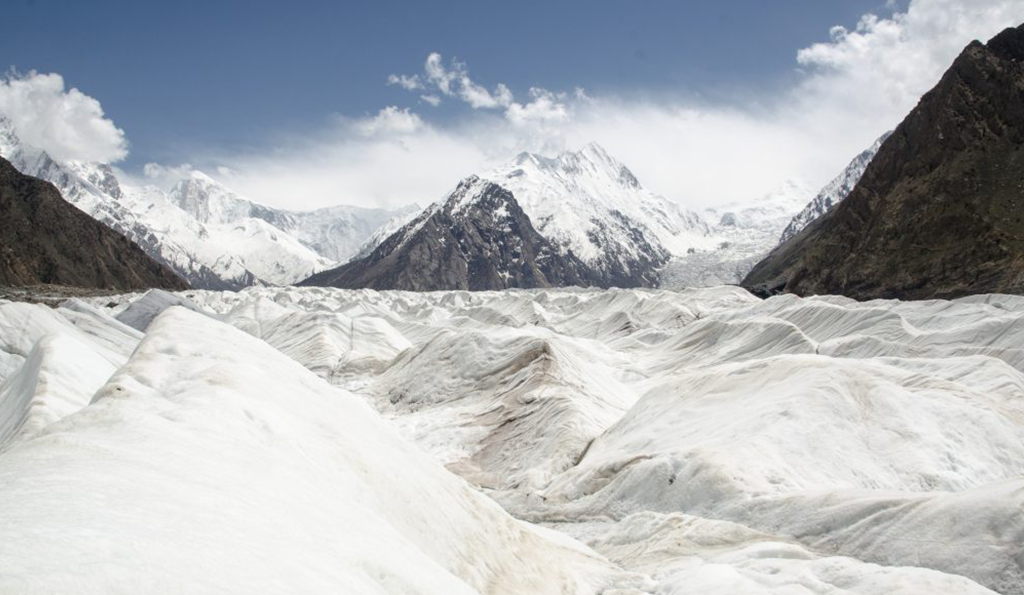
Hoper Glacier is a magnificent glacier located in the Nagar Valley, near the Hunza region. The glacier is renowned for its impressive size and stunning beauty, with its sprawling ice formations and dramatic crevasses. Surrounded by towering peaks and rugged terrain, Hoper Glacier offers a breathtaking spectacle of natural ice formations. The trek to the glacier provides an opportunity to explore the surrounding landscape and witness the grandeur of one of the Karakoram’s significant glaciers. The sheer scale and pristine nature of Hoper Glacier make it a must-visit destination for those interested in glacial landscapes and high-altitude adventures.


